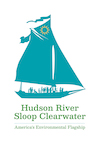In response to Hurricane Sandy, the Army Corps of Engineers (ACOE) was charged by Congress to study and propose approaches to managing coastal storm risk in the tidal Hudson River. Determining ways to protect communities from the impacts of coastal storms is critical to climate resilience in New York City and the Hudson Valley. However, the study did not require the consideration of risks from sea level rise or increasing intensity of precipitation within the study, leaving out two additional key considerations within planning for measures to protect shoreline communities.
In 2018, the ACOE released 6 proposed alternatives with limited transparency and community engagement. The proposals ranged from taking no action to massive in-water storm barriers to a combination of multi-basin barriers and shore-based measures.
Though the tentatively selected plan (3B) does not include whole-harbor-enclosing gates, it consists of 12 storm gates across tributaries, shoreline-based measures, and extensive shoreline walls (40+ miles). As a result of the limited scope authorized by Congress, the complex and costly project does not consider sea level rise or severe precipitation resulting in a high-cost and half-baked shoreline resilience plan.
The comment period for the Draft Integrated Feasibility and Tier 1 Environmental Impact Statement closed on March 31, 2023. Read Clearwater’s comments.
Clearwater strongly believes climate resilience planning should center the communities the plans are meant to protect, as well as nature-based solutions.
UPDATE: November 14, 2023 – New York State Department of Environmental Conservation sent a letter to overhaul the NYNJ HATS proposed storm surge protection plan by the U.S. Army Corps of Engineers (Corps). The State’s letter triggers a required process in federal law for the Corps to holistically study and provide solutions to address frequent tidal and river flooding, heavy rainfall, groundwater emergence, erosion, sea level rise, and storm surge as a part of the Corps’ New York- New Jersey Harbor and Tributaries Study.
DEC calls upon the ACOE to:
- Undertake a “multi-hazard” assessment of the projects in the study, considering all sources of flooding — from heavy rainfall to groundwater inundation to sea level rise — consistent with the requirements of the Water Resources Development Act of 2022;
- Issue a Supplemental Draft Environmental Impact Statement, for public review and comment, that includes the new analyzes and new or modified alternatives; and
- Finalize a plan only after completing the above.
DEC directed the Corps to:
- Adopt a phased, adaptive management approach, allowing for project modifications based on environmental assessments and community and stakeholder feedback
- Move individual project elements forward as they are ready, not trying to move the entire suite as one project
- Hire an external firm to lead outreach and engagement with environmental justice communities, and engage in regular, substantive public discussions
Read more from STORMWATER SOLUTIONS: New York requires USACE to overhaul flooding plan for NY-NJ Harbor
Stay up to date with the Army Corps Resilience Planning Process
